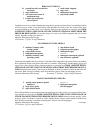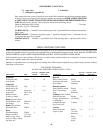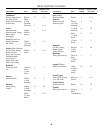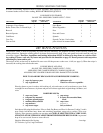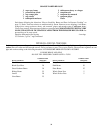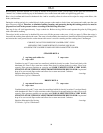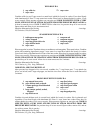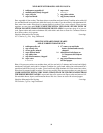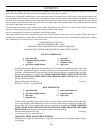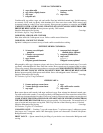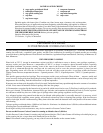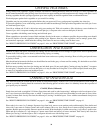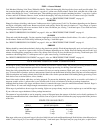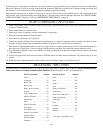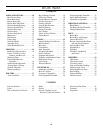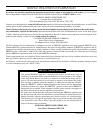
39
CANNING VEGETABLES
Young, tender, fresh vegetables, slightly immature, are better for canning than those which are overripe. As a rule, vegetables are
best if canned immediately after picking, since flavor decreases upon standing and often unpleasant color changes take place. Avoid
bruising vegetables because spoilage organisms grow more rapidly on bruised vegetables than on unblemished ones.
Wash and prepare garden fresh vegetables as you would for cooking.
Vegetables may be raw packed or precooked before they are processed. If raw, pack prepared vegetables into clean jars.
To precook vegetables, cover with boiling water and cook until heated through. Pack precooked vegetables into clean jars. Leave
one inch head space in jars.
Can with or without salt. If salt is desired use only pure canning salt. Table salt contains a filler which may cause cloudiness in
bottom of jars. Add
1
⁄
2
teaspoon canning salt to each pint jar (
1
⁄
4
teaspoon salt to each one-half pint) if desired.
Cover vegetables with boiling water leaving one inch head space.
When vegetables are precooked, some of their nutrients dissolve in the water; so whenever possible, the precooking water should
be used as liquid to cover the vegetables after packing in jars. However, there are a few vegetables, such as turnips, greens, kale,
and sometimes asparagus, which make the cooking water bitter. Do not use cooking water in these cases.
See “HOW TO PRESSURE CAN FOODS” on page 41. Also see “PROCESSING TIME CHART” on page 41.
CANNING MEAT AND POULTRY
Cut meat or poultry into pieces convenient for canning. Precook meat until red color changes to light brown. Precook poultry until
medium done. Precooking can be done by either boiling, frying, or roasting.
To precook by boiling, make a concentrated broth from bones and meat or poultry trimmings. Heat to boiling and precook meat
or poultry in broth.
Meat should not be browned with flour, nor should flour be used in the gravy of meat used for canning. It is desirable to use a little
liquid or broth with hot packed meats.
Pack hot meat or poultry into clean jars leaving one inch head space. Do not pack tightly. Canning salt may be added,
1
⁄
2
teaspoon
for each pint (
1
⁄
4
teaspoon salt to each one-half pint), or it may be added at serving time. Cover with hot liquid, broth, meat juice,
or water. It is important to leave one inch head space.
See “HOW TO PRESSURE CAN FOODS” on page 41. Also see “PROCESSING TIME CHART” on page 41.
CANNING FISH AND SEAFOOD
Only fresh fish should be canned and these should be bled and thoroughly cleaned of all viscera and membranes when caught, or
as soon as possible. Canning should be restricted to the following proven varieties where it is definitely known that a product of
good quality may be obtained.
CLAMS, Whole (Littleneck)
Scrub clams and soak overnight in 10% brine. Open clams and wash in salted water using 1 tablespoon salt for each quart of wa-
ter. Cover clam meat with boiling water, to which
1
⁄
8
teaspoon citric acid crystals have been added to each quart of water. Allow
to stand 1 minute. Pack loosely into clean, hot Mason jars, leaving 1 inch head space. Cover with hot concentrated clam juice to
1
⁄
4
inch from top.
See “HOW TO PRESSURE CAN FOODS” on page 41. Also see “PROCESSING TIME CHART” on page 41.
CRAB
Place crabs in ice water 1 to 2 minutes. Separate claws from body, remove waste portions and wash thoroughly. Place bodies and
claws with 2 cups water in Cooker-Canner, and cook 5 minutes with a very slow, steady flow of steam escaping from the pressure
regulator. Release pressure quickly. Remove meat from shells. Wash thoroughly in salted water using
1
⁄
2
cup salt to 2 quarts water.
Drain and dip in solution of
1
⁄
2
cup vinegar to 2 quarts water. Drain and remove all excess moisture. Pack loosely into clean, hot
Mason jars, leaving 1 inch head space. Add
1
⁄
2
teaspoon salt and cover with boiling water.
See “HOW TO PRESSURE CAN FOODS” on page 41. Also see “PROCESSING TIME CHART” on page 41.



